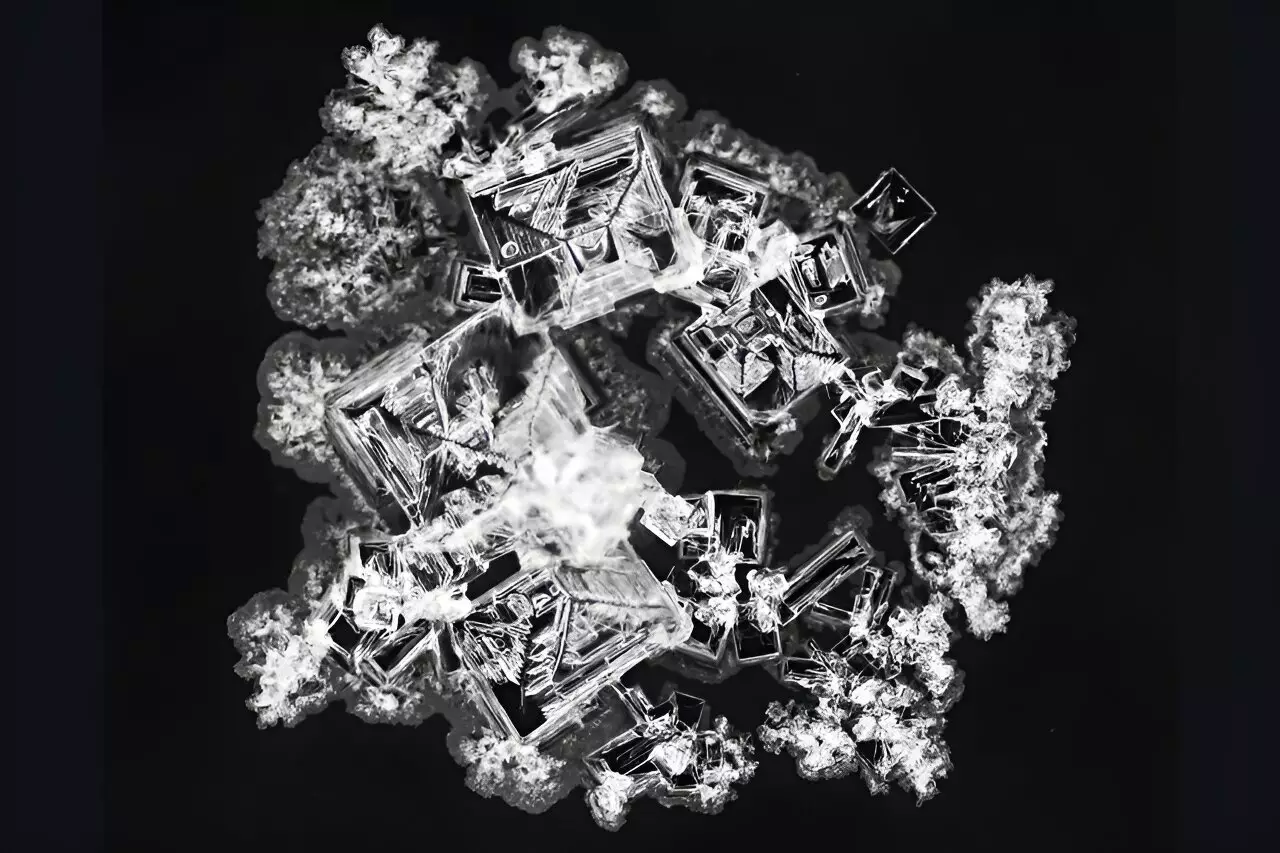In a fascinating blend of art and science, researchers at Florida State University (FSU) have taken a fresh approach to analyzing salt deposits. Their groundbreaking work sheds light on how machine learning can be employed to distinguish between various types of salts through the unique patterns left behind as salt solutions dry. Capturing the intricate details at a minuscule scale, these researchers highlight a system that could revolutionize our methods of chemical identification. The investigation showcased in the Proceedings of the National Academy of Sciences illustrates a novel intersection between chemistry and technology, illustrating that not all art is intentional—but the unintended designs can hold significant potential for understanding materials.
The Alchemy of Machine Learning
At the forefront of this study, Oliver Steinbock, a Cottrell Professor of Chemistry, emphasized the power of “chemical fingerprints.” These fingerprints are not unique only to famous works of art; they exist in the minute structures we typically overlook in everyday substances like table salt. The study reveals that different types of salts not only possess similar visual appearances, but also manifest distinctive patterns when crystallized and dried. The brilliance of this research lies in its premise: instead of analyzing the chemical composition in a traditional lab setting, researchers sought to determine salt types based solely on the analysis of their dried patterns.
To accomplish this, the team captured an impressive 7,500 photographs of various salt stains, transforming these images into quantifiable data. Each image was deconstructed into 16 defining parameters, enabling the evaluation of features such as deposit area, texture, and compactness. The application of machine learning algorithms to this trove of data unlocked the potential for accurate predictions of salt types, revealing an extraordinary success rate of 90%. This efficacy prompts an exciting question: what else could a machine learning approach uncover in the world of chemistry?
The Art of Automation
As technology continues to take strides forward, Steinbock’s team plans to expand their training dataset exponentially. By incorporating hundreds of thousands of additional images, their machine learning model can evolve further, enhancing both accuracy and versatility. This future vision poses a significant challenge regarding scalability; however, it also invites discussions about lab automation. Steinbock’s group is currently in the test phase of a robotic device designed specifically to capture and analyze droplet images—a tool that may provide a pivotal advantage in chemical research.
The traditional human approach often leads to confusion when confronted with large datasets. Herein lies the advantage of computational analysis: what appears complex to humans can be systematically processed by a computer. Steinbock’s assertions underscore a transformative shift in how we think about chemical identification; those with advanced technologies can glean insights from data in ways that were previously unthinkable. The automation of such processes not only paves the way for improved research methodologies but also opens doors to practical applications previously relegated to theoretical discussions.
Broad Implications for Scientific Discovery
The ramifications of this research extend far beyond the laboratory. The ability to identify the composition of a sample based purely on photographic analysis presents vast opportunities in fields ranging from planetary exploration to public health. For instance, deploying a lightweight camera equipped with this technology on a rover exploring Mars could dramatically reduce the resources required for chemical analysis, offering an elegant and cost-effective solution.
Moreover, in more terrestrial applications, rapid assessments of materials for safety, drug screening, and medical diagnostics in under-resourced environments could drastically improve the efficacy of responses in emergencies. The requirement for mere milligrams of a substance further enhances the accessibility of this technology, making it feasible for everyday use. As Bruno Batista, lead author of the study, articulates, this method could serve as a preliminary tool for identifying materials in various scenarios, presenting a paradigm shift in chemistry’s practical applications.
The Future of Chemical Analysis
As the convergence of machine learning and chemistry accelerates, one must consider the ethical implications of such advancements. With great power comes great responsibility; understanding the risks associated with misidentifying chemical substances is vital. It is crucial that this technology is applied judiciously and ethically, prioritizing human safety and welfare alongside innovation.
Steinbock’s research team stands at the intersection of art and science, revealing that beauty exists not only in the explicit but also in the intricacies of the mundane. The patterns formed by crystallizing salts are remarkable reflections of nature’s precision and complexity. As we navigate these new discoveries, it is essential to remember that behind every algorithm and every droplet lies the art of scientific exploration—a journey that continues to inspire and innovate.


Leave a Reply